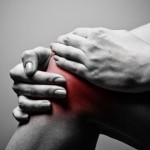
What do we know about arthritis-related pain and its management? I have been studying the pain experienced by persons with rheumatic diseases for 20 years, and the more I learn, the more I realize that I don’t know. I would guess most rheumatologists and rheumatology health professionals feel the same. Understanding and managing pain remains a challenge for many reasons. Just a few of these include:
- Individual interpretation of pain intensity;
- Individual perception of living with pain;
- The relationship between pain and factors such as functional ability and affect (e.g., depression and anxiety); and
- The selection of pharmacological and nonpharmacological management strategies to “fit” the individual.
What I’ve Learned About Pain
I began my study of pain by developing a measure of the pain experience that has been very helpful in understanding the components of the pain experience as interpreted by the individual patient. Testing of the Chronic Pain Experience Instrument (CPEI) resulted in the identification of three dimensions: function, affect, and helplessness.1 Probably most of us do not find these results surprising as we think about the experiences faced by people with arthritis. Revisiting the challenges listed above, we know that pain can affect function. Pain may, for example, affect how well one is able to walk, participate in activities that are personally enjoyable, pick up an object or a child, or perform work-related requirements.
When we think of affect, the often-asked question emerges: Does pain cause depression or anxiety, or do high levels of depression and/or anxiety cause pain? The probable answer is that there is a cyclical relationship between pain and affect. This relationship needs to be recognized in planning for pain management. Patients who feel helpless in the face of pain present a real challenge. Not only do they need to learn to use pain management strategies, but they must also believe that this will improve their outcomes. That patients can actually help manage their own pain though appropriate strategies is a belief essential to dealing with feelings of helplessness.
In clinical encounters, it is important to hear what persons with arthritis are saying when they talk about how they manage their pain and how they view the success of these efforts. Trying to make sense of these issues led me to do a concept analysis of pain management. The results have been very helpful; I now listen to personal descriptions and work with patients to plan useful strategies. The concept analysis resulted in three emergent dimensions: pain relief, pain modulation, and pain management self-efficacy.2 I have found that discussing pain management within the context of these dimensions has been invaluable.
Definitions to Consider
Pain relief refers to easing or alleviating the pain, primarily by pharmacological management. When thinking about relief, patients can expect the lowering of pain intensity within a certain period of time or they can expect a tolerable maintenance of pain intensity level by an ongoing pharmacological protocol. Pain modulation refers to adjusting to or softening the effects of the pain using a variety of nonpharmacological management strategies. Methods such as distraction, relaxation techniques, or pacing activities to avoid overexertion represent ways that persons can modulate their pain over time.


